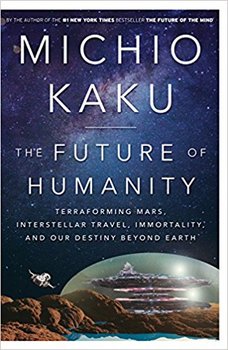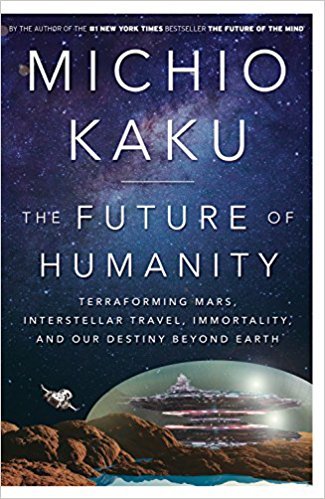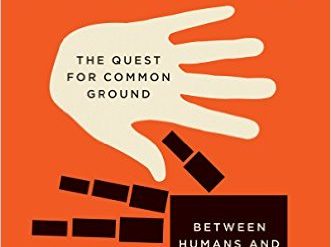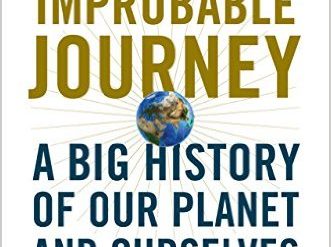
Climate change. The threat of thermonuclear war. Bioterrorism. Overpopulation. Is it any wonder that most Americans today are pessimistic about the future of the human race? In the face of all these (and so many other) existential threats to the survival of our civilization, who can blame us for wondering whether our grandchildren will live to see the 22nd century?
Estimated reading time: 4 minutes
Yet there are those who sail against the prevailing currents of thought and see a future that is endlessly bright. To this brave cadre of optimists we can now add physicist Michio Kaku, who peers hundreds of thousands of years into the future, envisioning human civilization spread throughout the galaxy in his dazzling new book, The Future of Humanity. Read this book, and he will take you on a journey from the moon and Mars to the multiverse.
“Either we must leave the Earth or we will perish.”
Professor Kaku’s prescription is unambiguous: “Either we must leave the Earth or we will perish. There is no other way.” In this judgment, he has a lot of company. The late Stephen Hawking and Elon Musk, for example, not to mention many other prominent scientists and technologists (and a handful of politicians) who see humanity’s future in the stars. Yet none of these individuals view the future through the rose-colored glasses of faith alone or science fantasy. Their conviction is grounded in solid scientific research.
Kaku makes that overwhelmingly clear in his considered, step-by-step presentation of the steady progression of the human race, first back to the moon, Mars, and the asteroids; then to the moons of Jupiter and Saturn; and finally onward to the nearest stars, with stopovers on the comets that swarm by the millions in the vast Oort Cloud that surrounds the solar system. This is truly a journey from the moon and Mars to the multiverse.
The Future of Humanity: Terraforming Mars, Interstellar Travel, Immortality, and Our Destiny Beyond Earth by Michio Kaku (2018) 368 pages ★★★★★
From the moon and Mars to the multiverse
The Future of Humanity is divided into four parts. In the first, Kaku takes us along to witness the establishment of a permanent base on the moon and the settlement and terraforming of Mars. In part two, we accompany him as humanity moves beyond the solar system to explore the nearby stars. Part three concerns the settlement of extrasolar planets, dwelling on the genetic changes that will be required for humans to adapt to the daunting conditions so likely to be found there.
The author’s argument is easy to follow throughout most of his book. His explanations of scientific phenomena are remarkably clear, using an abundance of pithy similes and metaphors. Only in the final chapters when he attempts to explain string theory (his specialization) and the more fanciful imaginings of cosmologists does Professor Kaku’s language become opaque. String theory “contains an infinite number of parallel universes, called the multiverse, each one as valid as the next.” In ten dimensions.
Ideas from the greats of science fiction
Science fiction fans will encounter a wealth of familiar concepts, from the most mundane (mining the asteroids) to the most spectacular (uploading human consciousness and projecting it with lasers or gravity beams throughout the galaxy). In fact, Kaku makes frequent references to the work of such science fiction luminaries as Olaf Stapledon, Isaac Asimov, and Arthur C. Clarke. Yet, in this book alone, the author floats enough fascinating ideas to put a whole roomful of science fiction writers to shame. And there is no doubting his optimism: “Transhumanism, instead of being a branch of science fiction or a fringe movement, may become an essential part of our very existence.”
About the author
Michio Kaku is a theoretical physicist who teaches at the City University of New York. He has made numerous appearances on television and in film, hosted a popular science program on radio, and written fifteen books, including several New York Times bestsellers.
For related reading
This is one of the books I’ve included in my post, Gaining a global perspective on the world around us.
It’s also one of 20 good nonfiction books about the future and Good books about space travel.
You’ll find an abundance of great nonfiction writing at Science explained in 10 excellent popular books. This one is included.
If you want to explore imaginative ideas in a fictional context, check out Great sci-fi novels reviewed: my top 10.
And you can always find my most popular reviews, and the most recent ones, on the Home Page.


























